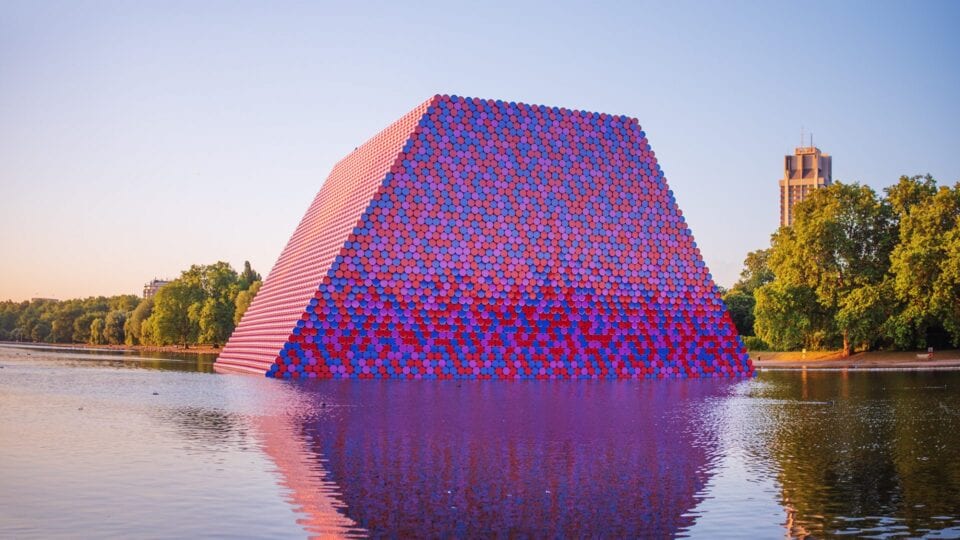Christo and Jeanne-Claude were a renowned artistic duo known for their large-scale environmental installations and monumental public artworks. Their innovative approach involved wrapping buildings, bridges and landscapes with fabric, transforming familiar landmarks into temporary and awe-inspiring works of art. Some of their most famous installations include Wrapped Reichstag in Berlin, enveloping the German parliament building in silver fabric (1995), and The Gates in Central Park (2005), which involved installing over 7,000 saffron-coloured fabric panels over the same number of gates. Now, as part of its Season of Sculpture, Saatchi Gallery showcases the largest retrospective of the artists. Christo and Jeanne-Claude: Boundless traces their journey, from beginnings in Paris to six decades of collaboration.

The exhibition reveals a story of love and artistic cooperation between the two artists, celebrating their synergy and profound connection, contextualised alongside artistic contemporaries, including Jean Dubuffet, Yves Klein and Lucio Fontana. Saatchi reveals early iterations of wrapped objects, displaying bottles and magazines covered in sackcloth and rope. Wrapped Payphone (1988) presents a cuboid-like shape, enveloping a metallic box phone. The readymade piece evokes Christo’s experiences as a refugee and nomad – where in his own words, “cloth is the principal element to translate this.” It unveils a narrative of determination, later exemplified in large scale pieces such as The Floating Piers at Lake Iseo (2016), a yellow three three-kilometre long walkway, linking mainland Italy to the island of San Paolo. Elsewhere, we see the 24-year journey it took to complete Wrapped Reichstag. From the 1970s-1990s, the proposal was rejected three times – due to political tensions and the site’s historic position as the seat of the German parliament. In 1995, the building was covered in 100,000 square meters of silver fabric.

A highlight of the exhibition is the final room that displays a model version of Mastaba, a sculptured conceived in 1977, requiring 410,000 multi-coloured barrels. The geometric form takes inspiration from ancient mastabas – benches with two vertical sides, two slanted sides and a flat top – which originate from the first urban civilisations of Mesopotamia. Boundless explores the enormous project, conceived to be installed in Abu Dhabi’s Liwa desert. Christo explained, “The mastaba is an extraordinary form – for me, more beautiful than the pyramid because the pyramid has four sloping sides, while the mastaba has two inclined sides and the other two are vertical. It’s a different vision of height from different angles, different lines. It’s a movement, a burst of strength. When you’re in a lateral position and you look at the diagonal walls, you feel that the whole structure is going to explode. It is, above all, the result of a balance of forces.” The project completes an exhibition that shows the full extent of Christo and Jeanne-Claude’s legacy. Here, Saatchi exemplifies the duo’s extraodinary ability to merge art, architecture and form. It’s a skillful balancing act that reminds us of the grandeur of our environment, acting as a testament to imagination.
Christo and Jeanne-Claude: Boundless: Dialogues | Until 22 January
Image Credits:
1. Christo and Jeanne-Claude, The London Mastaba, Serpentine Lake, Hyde Park, 2016-18 Photo: Wolfgang Volz © 2018 Christo
2. Wrapped Reichstag, Berlin (1971-95) Photo: Wolfgang Volz





